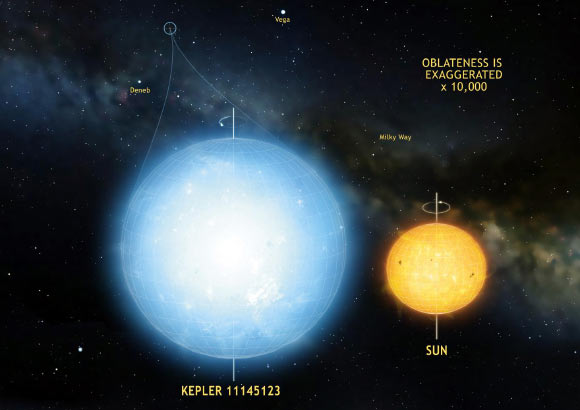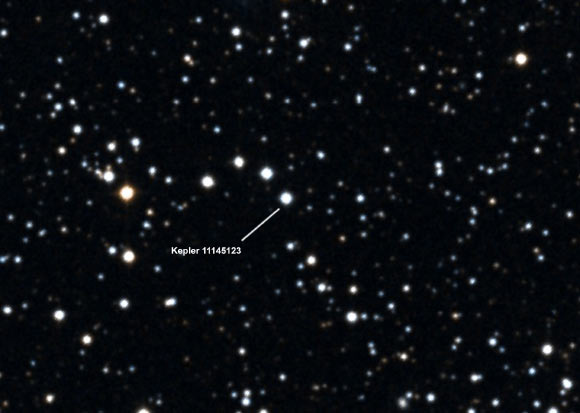Kepler 11145123, a slowly rotating star roughly 5,000 light-years away, is the most spherical natural object ever measured, more spherical than the Sun, says an international team of astronomers.
The team, led by Dr. Laurent Gizon, an astronomer with the Max Planck Institute for Solar System Research and the University of Göttingen, was able to measure the oblateness of Kepler 11145123 using asteroseismology – the study of the oscillations of stars.
The technique revealed that the difference between the equatorial and polar radii of the star is only 3 km – a number that is surprisingly small compared to the star’s mean radius of 1.5 million km.
“This makes Kepler 11145123 the roundest natural object ever measured, even more round than the Sun,” Dr. Gizon said.
Kepler 11145123, also known as KIC 11145123, is an A-type star with a rotation period of 100 days.
The astronomers selected this star, which is more than twice the size of the Sun, to study because it supports purely sinusoidal oscillations. The periodic expansions and contractions of the star can be detected in the fluctuations of its brightness.
NASA’s Kepler mission observed the star’s oscillations continuously for more than four years.

Kepler 11145123 is the roundest natural object ever measured in the Universe. Stellar oscillations imply a difference in radius between the equator and the poles of only 3 km. Image credit: Mark A. Garlick.
Different modes of oscillation are sensitive to different stellar latitudes. For their study, the authors compare the frequencies of the modes of oscillation that are more sensitive to the low-latitude regions and the frequencies of the modes that are more sensitive to higher latitudes.
This comparison shows that the difference in radius between the equator and the poles is only 3 km with a precision of 1 km. Surprisingly, the star is even less oblate than implied by its rotation rate.
Dr. Gizon and co-authors propose that the presence of a magnetic field at low latitudes could make the star look more spherical to the stellar oscillations.
Just like helioseismology can be used to study the Sun’s magnetic field, asteroseismology can be used to study magnetism on distant stars.
Stellar magnetic fields, especially weak magnetic fields, are notoriously difficult to directly observe on distant stars.
Kepler 11145123 is not the only star with suitable oscillations and precise brightness measurements.
“We intend to apply this method to other stars observed by Kepler and the upcoming space missions TESS and PLATO,” Dr. Gizon said.
“It will be particularly interesting to see how faster rotation and a stronger magnetic field can change a star’s shape.”
“An important theoretical field in astrophysics has now become observational.”
This research was presented in a paper published in the journal Science Advances on Nov. 16, 2016.
_____
Laurent Gizon et al. 2016. Shape of a slowly rotating star measured by asteroseismology. Science Advances 2 (11): e1601777; doi: 10.1126/sciadv.1601777








